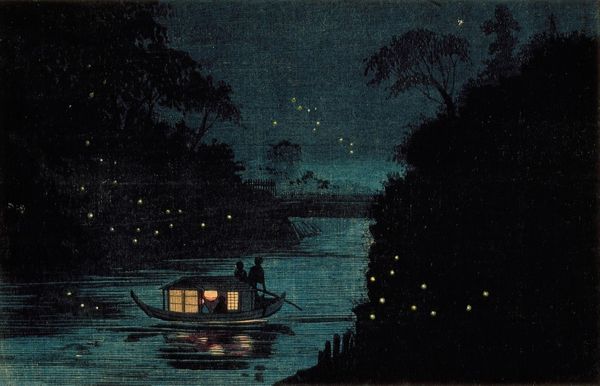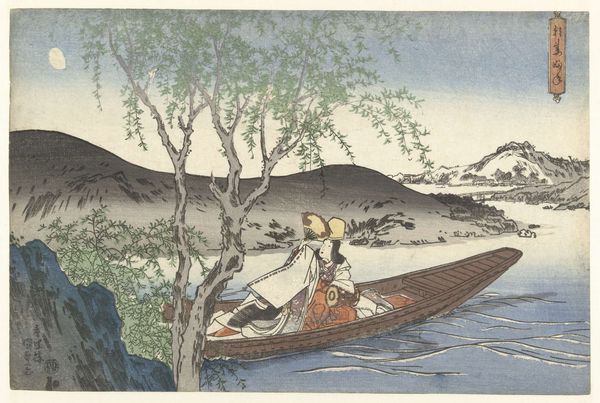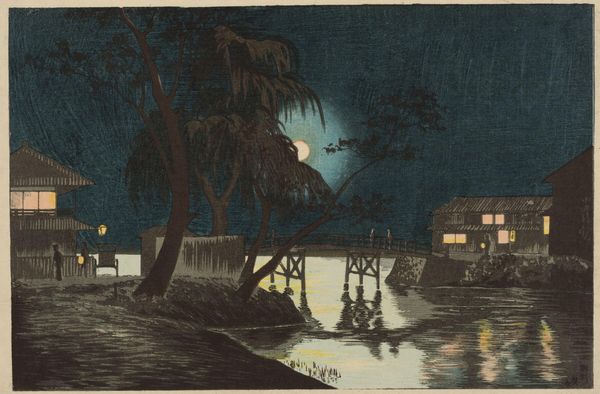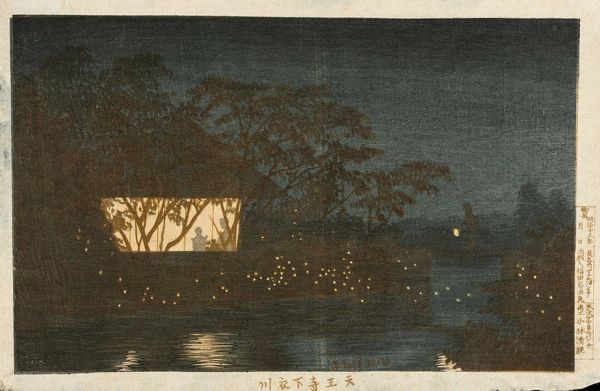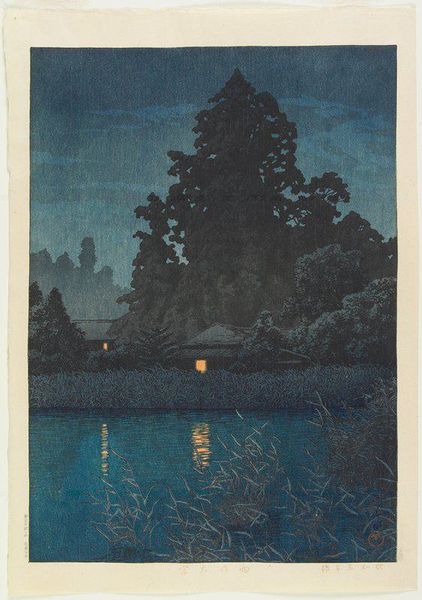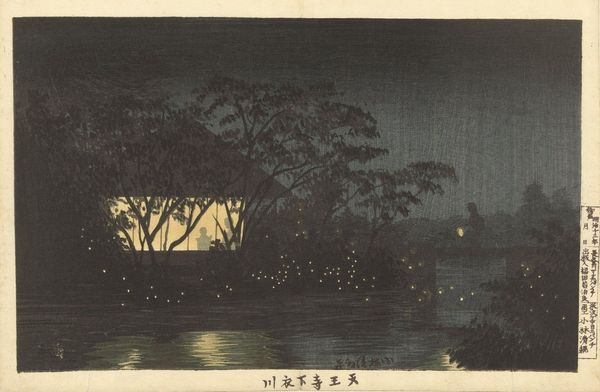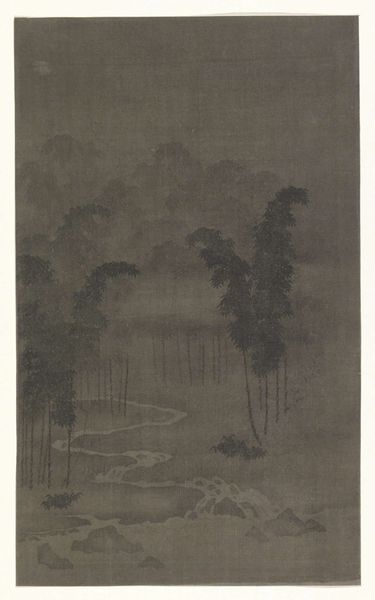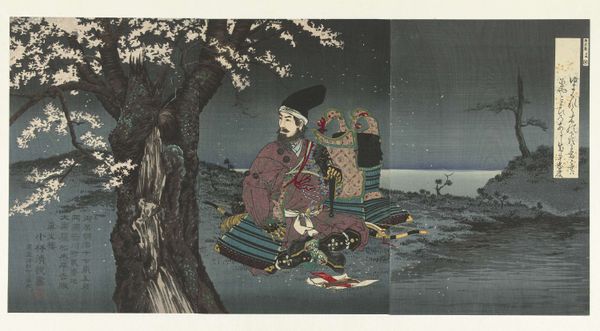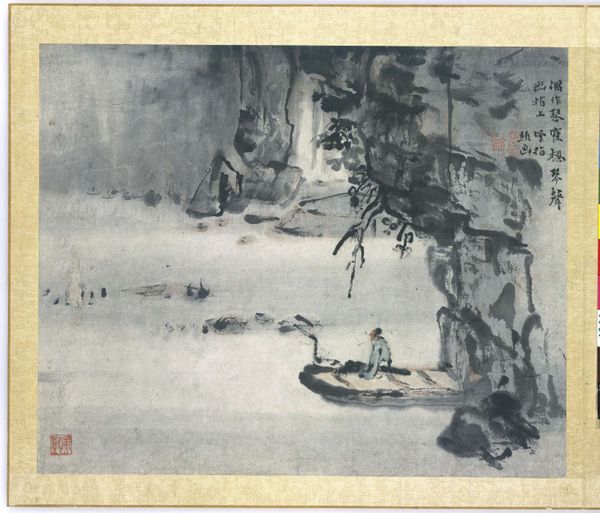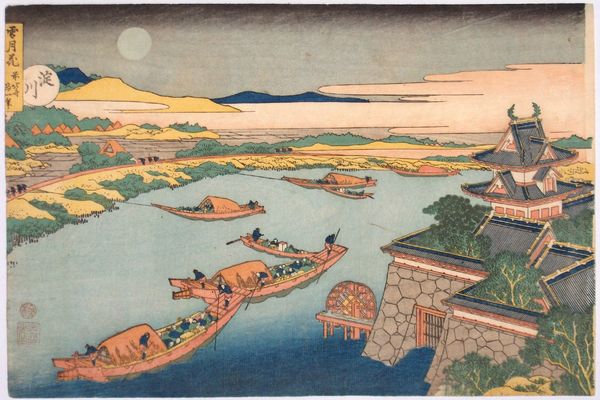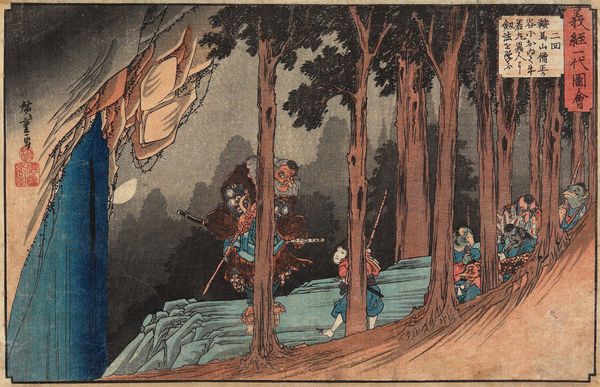
painting, watercolor
tree
water colours
narrative-art
painting
asian-art
landscape
figuration
watercolor
romanticism
orientalism
line
Copyright: Public domain
Curator: Here we see "Fate and the Pleasure-Lovers," a watercolor by Abanindranath Tagore. It exudes a romantic sensibility, steeped in Orientalist themes and techniques, don't you agree? Editor: Absolutely, I’m immediately struck by the overwhelming sense of nocturnal calm. The muted tones and careful brushwork evoke a sense of longing and contemplation. What do you observe in its composition? Curator: Note how the delicate lines and layering of color create depth, framing figures both in shadow and light, suggesting narrative tensions between observers on the verandah, and the lit boat in mid-water. It strikes me as significant that they are divided, but not separated. Editor: I am compelled by its visual positioning within broader colonial and nationalist discourses. Tagore’s intentional adoption and adaptation of European watercolor techniques allowed him to challenge Western artistic hegemony and express a distinctively Indian identity on his own terms. He is critiquing while doing. Curator: Interesting. For me, the romantic style suggests more universally relevant aesthetic ideals: beauty and sublime contemplation in this scene are readily evident for a cross-cultural viewer regardless of local or colonial histories. What feelings does the image evoke? Editor: Melancholy, perhaps, tinged with resistance. While appearing beautiful on the surface, the very presence of leisure amid political turmoil reflects a subtle critique of colonial structures. The work reveals a personal intimacy, yet echoes historical narratives. Curator: I see your point regarding its context within social struggles; still, let us not overlook Tagore’s skillful handling of medium itself, producing a striking scene which uses delicate color relationships to develop an evocative mood that stands by itself. Editor: Indeed, the synthesis of technique and theme allows us to see past conventional notions to recognize Tagore’s brilliance in its fullest historical and cultural scope. Curator: Yes, the painting lingers in the mind because of the artist’s successful use of pictorial structure. Editor: I appreciate how our dialogue highlighted different dimensions, further underscoring the rich depth of his contribution to cultural change.
Comments
No comments
Be the first to comment and join the conversation on the ultimate creative platform.
